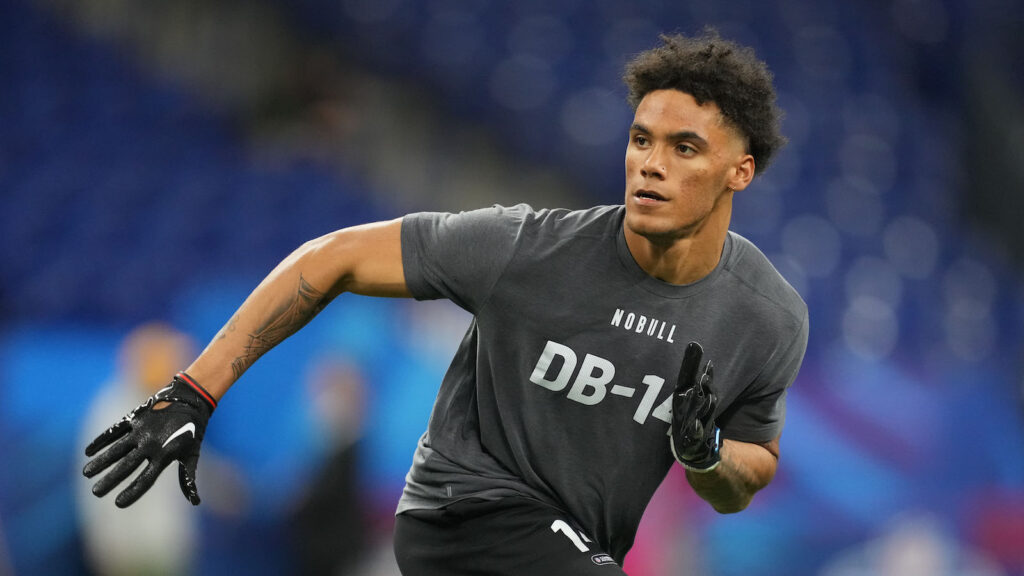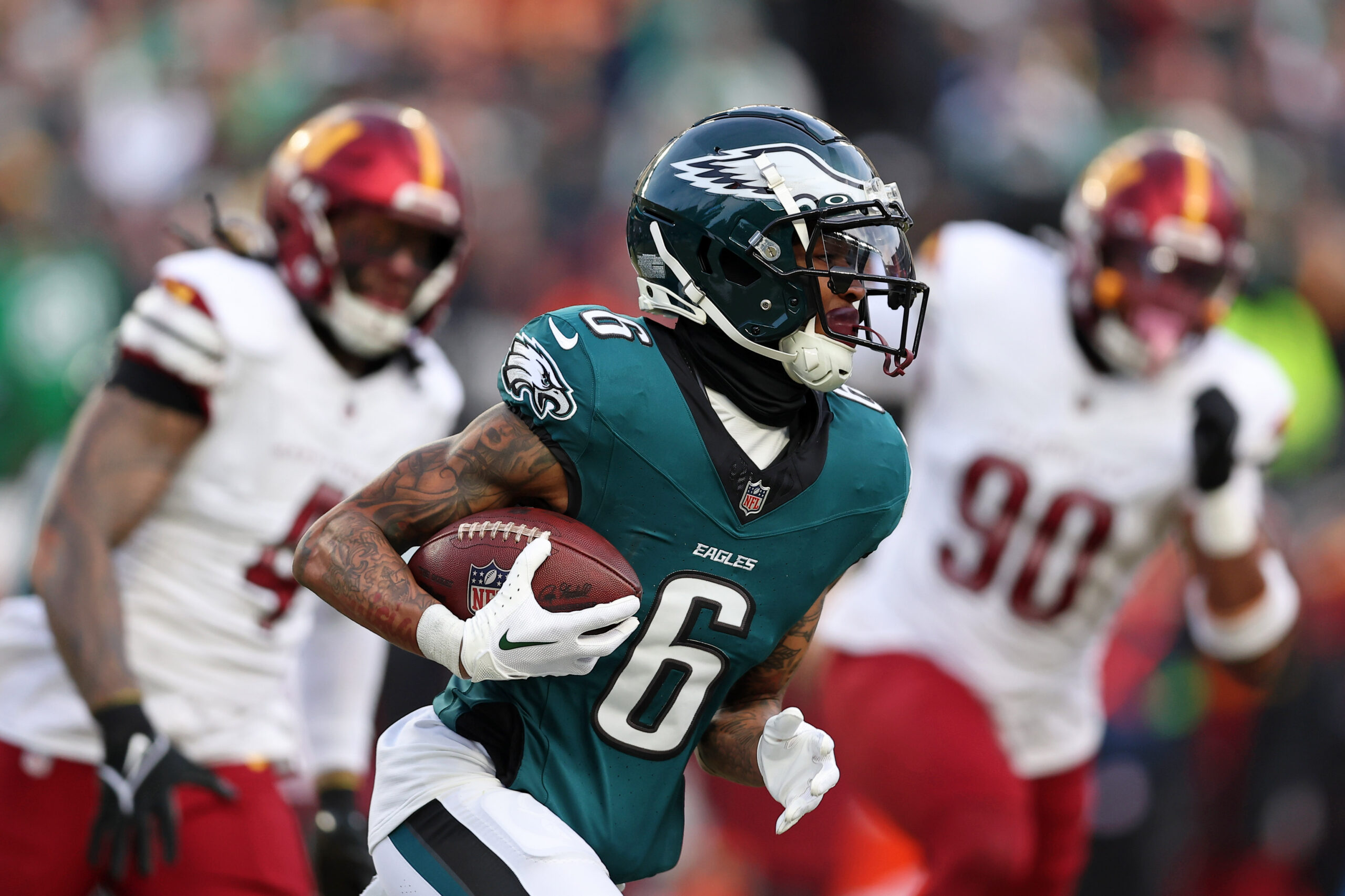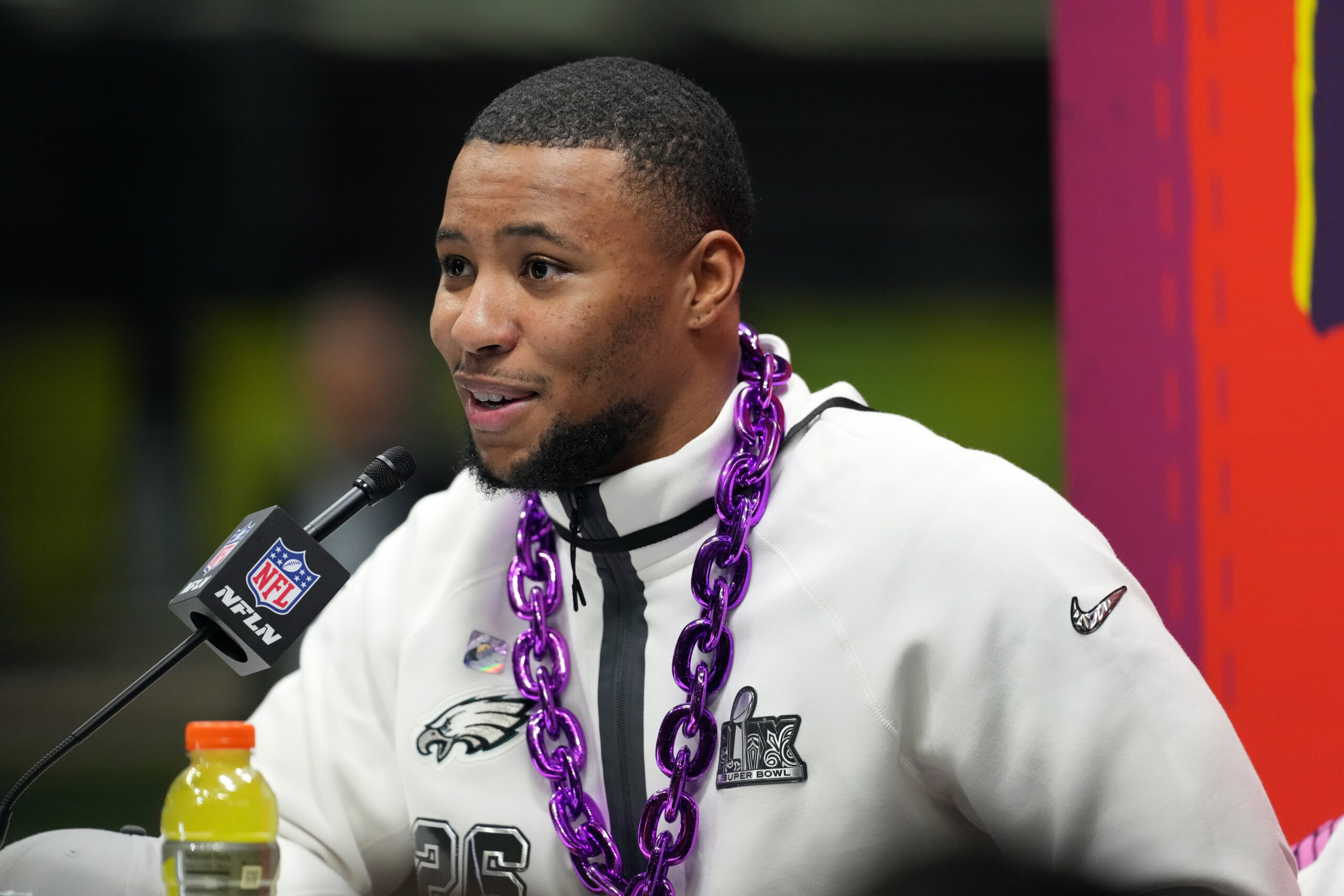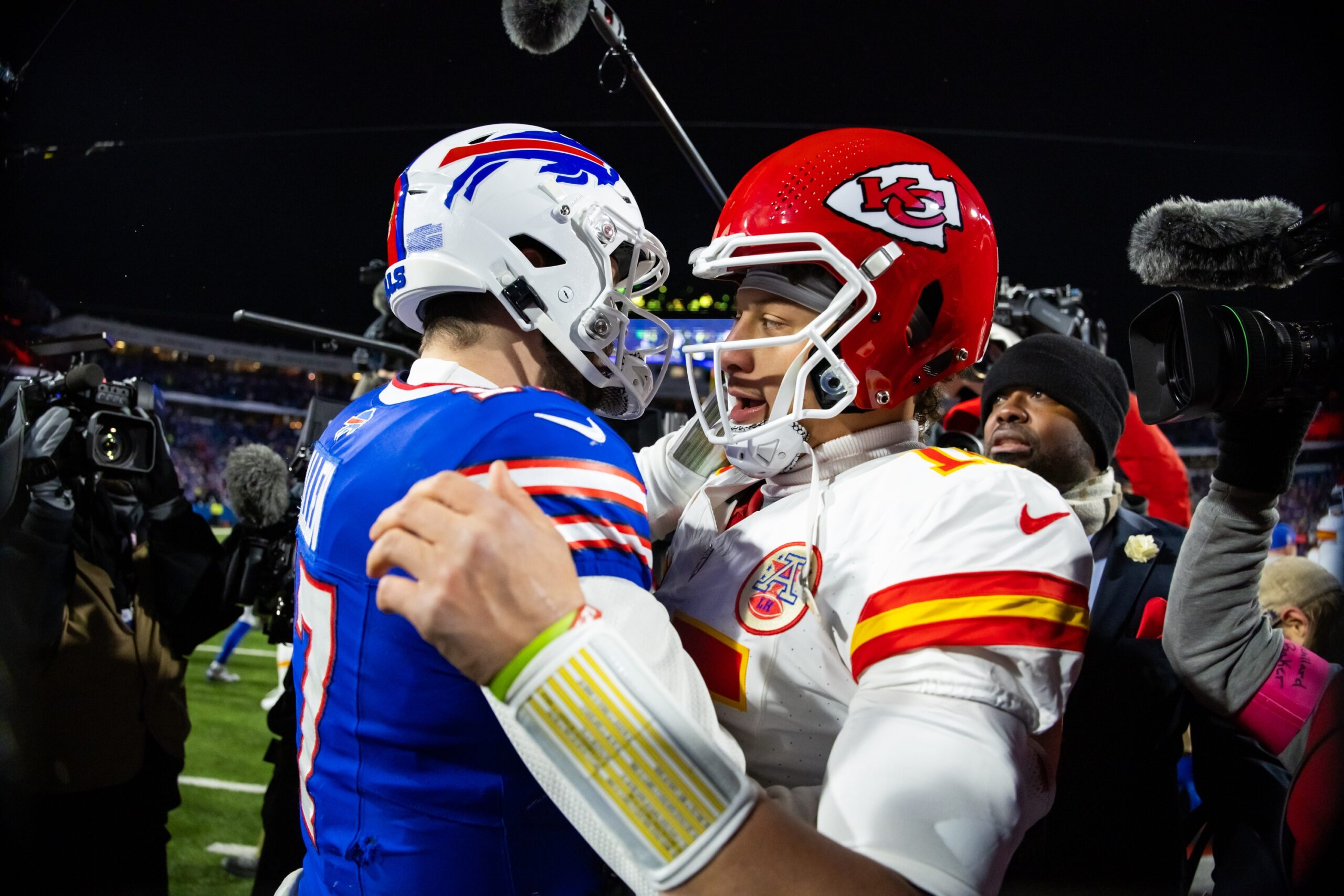Betting
3/24/23
8 min read
2023 NFL Draft: Betting Which Cornerback Goes First

The past few years have produced elite cornerbacks such as Patrick Surtain II and Sauce Gardner near the top of the NFL Draft, and we might have more on our hands in 2023.
While Illinois’s Devon Witherspoon (scouting report) and Oregon’s Christian Gonzalez (scouting report) have scouts raving, one of these prospects projects as a prototypical early selection, whereas the other has glaring analytical deficiencies. Both can succeed in the NFL, but one is far more likely to cost early draft capital.
Which CB Will Go First?
The Data
Some years feature multiple top-five cornerbacks, like 2022 with Derek Stingley Jr. and Gardner. Others only have one cornerback go in the first round, like 2019, with Deandre Baker at the 30th pick. With such information, using Baker in the early cornerback archetype while excluding Gardner would fog the picture, as we know this class likely has multiple early first-round cornerbacks.
Using relative athletic score (RAS), draft pick information and early declaration status, we can piece together the characteristics NFL teams look for when selecting a cornerback early. The data set will comprise cornerbacks taken in the first half of the first round from 2013 through 2022. Let’s jump into why Gonzalez looks like the near-perfect cornerback prospect.
| Name | Year | Position Rank | Draft Position | College | All Time RAS | Declare Status |
| Derek Stingley Jr. | 2022 | 1 | 3 | Louisiana State | 8.95 | early declare |
| Jeff Okudah | 2020 | 1 | 3 | Ohio State | 8.87 | early declare |
| Denzel Ward | 2018 | 1 | 4 | Ohio State | 9.62 | early declare |
| Ahmad Gardner | 2022 | 2 | 4 | Cincinnati | 9.25 | early declare |
| Jalen Ramsey | 2016 | 1 | 5 | Florida State | 9.89 | early declare |
| Jaycee Horn | 2021 | 1 | 8 | South Carolina | 9.98 | early declare |
| Justin Gilbert | 2014 | 1 | 8 | Oklahoma State | 9.32 | late declare |
| Dee Milliner | 2013 | 1 | 9 | Alabama | 9.1 | early declare |
| C.J. Henderson | 2020 | 2 | 9 | Florida | 9.93 | early declare |
| Patrick Surtain II | 2021 | 2 | 9 | Alabama | 9.95 | early declare |
| Eli Apple | 2016 | 2 | 10 | Ohio State | 9.15 | early declare |
| Marshon Lattimore | 2017 | 1 | 11 | Ohio State | 9.96 | early declare |
| Trae Waynes | 2015 | 1 | 11 | Michigan State | 8.56 | early declare |
| Vernon Hargreaves III | 2016 | 3 | 11 | Florida | 9.2 | early declare |
| D.J. Hayden | 2013 | 2 | 12 | Houston | 7.04 | late declare |
| Kyle Fuller | 2014 | 2 | 14 | Virginia Tech | 8.2 | late declare |
| Marlon Humphrey | 2017 | 2 | 16 | Alabama | 9.43 | early declare |
| Kevin Johnson | 2015 | 2 | 16 | Wake Forest | 9.21 | late declare |
| A.J. Terrell | 2020 | 3 | 16 | Clemson | 8.66 | early declare |
Desired Traits
Of the 19 cornerbacks drafted in the top 16, 15 (or 79%) are early declares. Eight of the nine eligible corners were early declares in draft classes where the first cornerback went in the top 16, an assumption that comfortably matches the 2023 class. We have strong evidence the ideal cornerback declared for the NFL after three years in college.
Athletically, the first cornerback in our nine-class sample (again, excluding the 2019 class) has a RAS of 8.56 or better. This athletic marker is our threshold. While a perfect RAS score of 10.00 is preferred, the NFL will confidently take players with RAS scores in the 8.5 range (approximately the 85th percentile in the RAS database) at the top of the draft.
There have been five first-round early declare cornerbacks with a RAS score of 9.70 or higher, all within a range of 9.89 - 9.98. All members of this group (Jalen Ramsey, Jaycee Horn, C.J. Henderson, Marshon Lattimore, and Surtain) have gone in the top 11 of their classes. Gardner, who was selected fourth in 2022, could have joined this category had he completed athletic testing. In short, the past decade has shown us when a prospect meets these thresholds, they will go ahead of a cornerback that does not.
Approximation Notes
Gardner does not have a RAS score because he did not complete enough tests. However, his approximate score is 9.25 based on the available information and his excellent athleticism on his limited tests.
Contextual Notes
When the Raiders selected D.J. Hayden with the 12th pick in 2013, they initially picked at No. 3. They traded down because the consensus viewed Hayden as a fringe first-round talent, and they knew he would be available in the middle of the first round. Removing him from the data set would be ill-advised, but we must keep his situation in mind.
The 2023 Class, Per The Data
[bc_video video_id="6320493191112" account_id="6312875271001" player_id="default" embed="in-page" padding_top="56%" autoplay="" min_width="0px" playsinline="playsinline" picture_in_picture="" language_detection="" application_id="" max_width="680px" mute="muted" width="100%" height="100%" aspect_ratio="16:9" sizing="responsive" ]
 Devon Witherspoon
Devon Witherspoon
Since Witherspoon failed to test at the combine and his pro day due to a minor hamstring injury, it's probable his athletic testing would not have been great. Witherspoon weighed in at just 181 pounds while standing 5-foot-11. This testing would make it nearly impossible for Witherspoon to achieve a RAS close to 9.0, though a score in the 6.5-8.5 range is likely.
Witherspoon also played four years in college, making him an outlier. While many who watch film believe Witherspoon is worthy of an early draft selection, historical precedent says he is doubtful to be the first cornerback selected in a talented class. Witherspoon is currently +175 at FanDuel to be the first cornerback selected.
[bc_video video_id="6322173720112" account_id="6312875271001" player_id="default" embed="in-page" padding_top="56%" autoplay="" min_width="0px" playsinline="playsinline" picture_in_picture="" language_detection="" application_id="" max_width="680px" mute="muted" width="100%" height="100%" aspect_ratio="16:9" sizing="responsive" ]
Christian Gonzalez
Gonzalez, an early declaration, played three years in college, two with Colorado before playing his junior season at Oregon. At the combine, Gonzalez posted a RAS score of 9.94. At 6-foot-2, 200 pounds, he has the ideal size and athleticism for the position. He came into the season as a projected early first-round pick, and his outlook remains positive after the early draft cycle. He's currently -160 at Caesars to be the first cornerback selected.
[bc_video video_id="6321660049112" account_id="6312875271001" player_id="default" embed="in-page" padding_top="56%" autoplay="" min_width="0px" playsinline="playsinline" picture_in_picture="" language_detection="" application_id="" max_width="680px" mute="muted" width="100%" height="100%" aspect_ratio="16:9" sizing="responsive" ]
Joey Porter Jr.
The son of a former NFL star, Joey Porter Jr. (scouting report) played at Penn State for four seasons, making him a late declaration. Porter Jr. scored a 9.70 RAS at the combine, putting him in the upper echelon of early-drafted cornerbacks. Porter is currently +1000 at Caesars to be the first cornerback drafted.
[bc_video video_id="6319356265112" account_id="6312875271001" player_id="default" embed="in-page" padding_top="56%" autoplay="" min_width="0px" playsinline="playsinline" picture_in_picture="" language_detection="" application_id="" max_width="680px" mute="muted" width="100%" height="100%" aspect_ratio="16:9" sizing="responsive" ]
Cam Smith
Cam Smith (scouting report) played four years at South Carolina but is picking up steam from scouts. The Athletic’s Draft Consensus Board has Smith behind only Porter Jr. and Gonzalez, whereas GrindingTheMocks (a free-to-use mock draft data aggregator) has Smith as the sixth cornerback and a fringe first-round selection. Smith produced a 9.70 RAS and is currently +5000 at DraftKings to be the first corner taken.
[bc_video video_id="6319321236112" account_id="6312875271001" player_id="default" embed="in-page" padding_top="56%" autoplay="" min_width="0px" playsinline="playsinline" picture_in_picture="" language_detection="" application_id="" max_width="680px" mute="muted" width="100%" height="100%" aspect_ratio="16:9" sizing="responsive" ]
Brian Branch
Brian Branch (scouting report) played three years as a safety-cornerback hybrid for Alabama. However, Branch had a RAS score of 6.06, making it nearly impossible for him to go ahead of all the above cornerbacks. Branch is +2500 at DraftKings and FanDuel to go first, but I do not think he has a realistic shot to go that high.
How We Can Bet The Markets
There are multiple potential worthwhile wagers in the two cornerback markets. In a head-to-head market between Gonzalez (-225) and Witherspoon (+180) on DraftKings, I think Gonzalez is likely to be drafted earlier, even at the 69 percent implied probability that comes with taking a -225 line.
Witherspoon projects as a cornerback that should go in the early 20s of the draft based on athleticism and declaration status from 2013-2022. However, the consensus regards the 2023 class as one of the weakest in recent memory, so he is mocked in the middle of the first round. Gonzalez is close to the perfect cornerback prospect on paper, and all the available evidence suggests the NFL will prefer him to Witherspoon.
In the first cornerback selected market, I would bet Gonzalez down to at least -300, meaning an implied 75 percent probability of Gonzalez as the first corner off of the board. Gonzalez projects as the first cornerback off the board on GrindingTheMocks, and the athleticism and declare status both push toward Gonzalez and suggest we should fade the small, older Witherspoon. Witherspoon should be roughly +400 to be the first cornerback taken, but he is still in the +150 through +175 range and should not be bet at that cost. Porter Jr. intrigues me at +1000, but I firmly think Gonzalez is the play with the current market prices.







